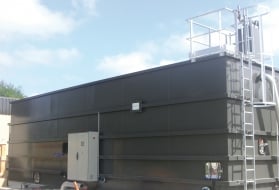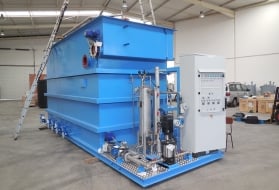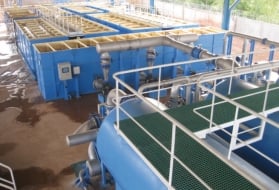ucd (degremont® compact unit)
Reading time:Comprising clarification and filtration, this is the most widespread solution used for producing drinking water from surface water or from groundwater (≤ 500 mg · L–1 suspended solids, capable of operating at a reduced flow rate of up to 2 g · L–1), that is not brackish and that contains no chemical contamination.



There are 14 models, all skid-mounted, covering a range of outputs from 5 to 720 m3·h–1 (1.4 to 200 L·s–1). Three of these are visible in photos 28 and 29. In principle, these are automatic or semi-automatic plants and include:
- one electrical cabinet for operating controls;
- one unit for preparing and injecting reagents (aluminium sulphate, sodium carbonate or lime, calcium or sodium hypochlorite);
- a static coagulator and a mechanical flocculator;
- a lamellar clarifier (gravity) operating at a Hazen velocity of approximately 0.7 m · h–1
- a clarified water storage compartment from which this water is then pumped;
- pressure filtration (v = 8 to 12 m · h–1) through vertical or horizontal filters depending on the model, with air scour and water backwash (‘mutual’ wash: therefore, a backwash water cistern is unnecessary);
- disinfection using chlorine.

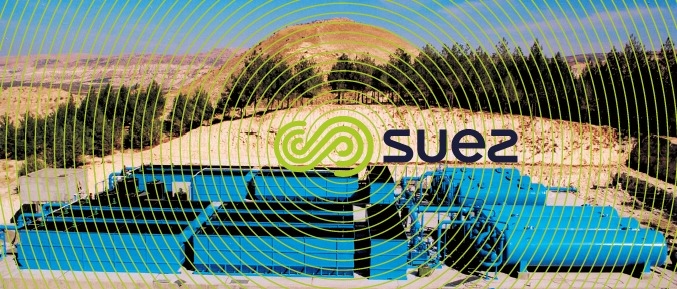


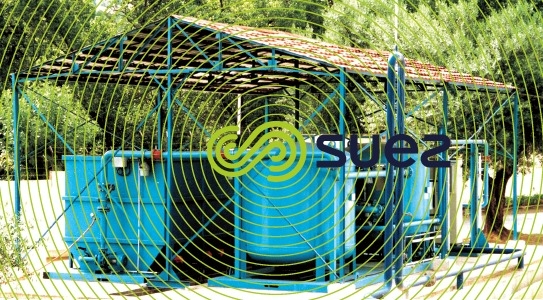

After gravity settling which can be monitored easily, filtration has the advantages of a pressure operation: longer cycles, treated water that can be fed straight into a tank or a network (available residual pressure – 2 bar as standard and this pressure can be increased if necessary).
These units can be housed in containers for flows up to 80 m3·h–1. Beyond this value, each skid is adjusted to the dimensions of a container. They can be installed (hydraulic couplings and electrical connections) very quickly and require a simple foundation slab (preferably under cover, see photo 28) and a channel for discharging clarification sludge and filter backwash water into the drains.
Bookmark tool
Click on the bookmark tool, highlight the last read paragraph to continue your reading later













